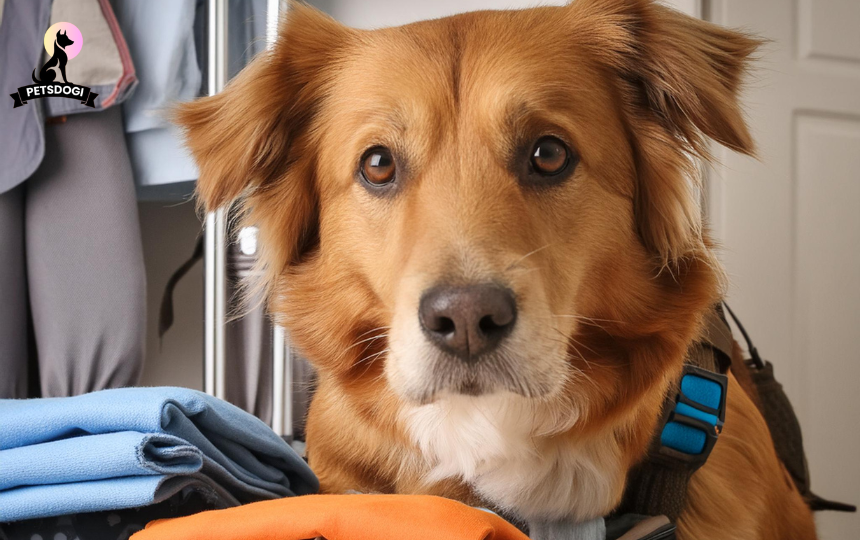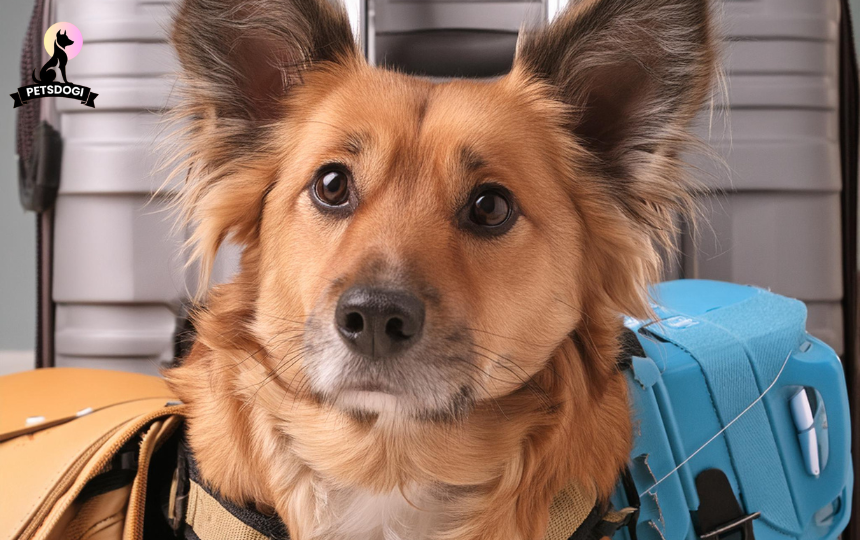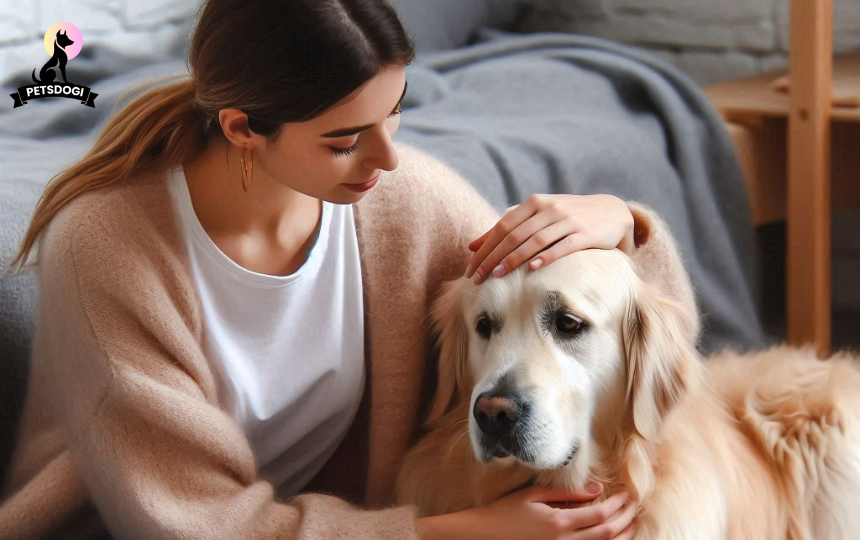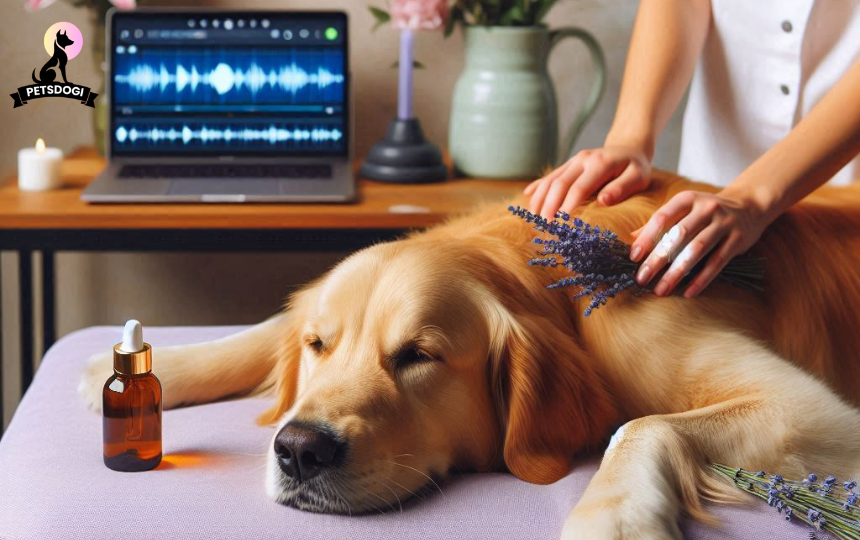Pet owners frequently deal with dog separation anxiety, which is detrimental to the health of our furry friends. Being a responsible pet owner is recognizing the warning signs in your dog and employing practical techniques to help him get used to being left alone.
We will examine useful information and doable solutions to deal with and lessen canine separation anxiety in this post. Whether you’re a first-time pet owner or your pet is acting out when left alone, this guide seeks to offer you direction and answers so you can enjoy a happier, more laid-back canine friend. Continue reading to learn doable strategies for reducing your dog’s separation anxiety and fortifying your relationship with your four-legged companion.
1. Identifying Canine Anxiety About Separation
When our furry friends are left alone, they might exhibit a variety of behavioral symptoms that are indicative of separation anxiety in dogs. Treating and easing separation anxiety begins with identifying its symptoms, which is a prevalent issue for pet owners.
Identifying Separation Anxiety Symptoms:
A person experiencing separation anxiety may exhibit destructive chewing, excessive barking, or house soiling. Dogs that are anxious about being alone may pace, become restless, or try to flee. Pet owners may tell whether their dog is having separation anxiety by keeping an eye out for these indicators.
Examining What Separation Anxiety in Dogs Means:
Canine separation anxiety surpasses typical loneliness-related discomfort. The defining feature of the illness is excessive and persistent suffering, which results in disruptive behaviors. Pet owners can distinguish between normal discomfort and a more serious behavioral issue by being aware of what separation anxiety is.
To provide pet owners a thorough grasp of separation anxiety, we will explore particular behaviors that are indicative of the disorder in this section. Owners may prevent separation anxiety from worsening and foster a better and more positive relationship between their pets and their human companions by identifying the symptoms early on.
2. Recognizing Separation Anxiety and Evaluating It

To identify separation anxiety in your dog, it’s critical to pay great attention to their actions and reactions when left alone. This section’s goal is to help dog owners determine their dog’s level of separation anxiety and its symptoms.
How to Tell Whether Your Dog Is Separation Anxious:
It’s critical to observe your dog’s behavior while you’re away. Behaviors like as increased vocalization, destructive chewing, or inappropriate urinating may be signs of separation anxiety. Monitoring these behaviors over time can provide valuable insights on the nature and severity of the issue.
Characteristics and Intensity of Divorce Anxiety:
There is a range of separation anxiety and different levels of intensity. The common symptoms of mild, moderate, and severe separation anxiety are described in this subsection. Comprehending the spectrum enables pet owners to customize treatments according to the unique requirements of their canines, guaranteeing efficient and considerate handling.
Through the identification and assessment of separation anxiety, pet owners can better comprehend their dogs’ mental states when they are left alone. This knowledge serves as the cornerstone for adopting suitable measures to reduce discomfort and make their animal friends’ surroundings more pleasant.
3. Techniques for Behavioral Modification
Using behavioral modification approaches is frequently the first step in treating separation anxiety in dogs. This section will discuss doable tactics and progressive desensitization techniques to assist your dog in adjusting to being left alone.
Strategies for Gradual Desensitization:
The process of gradual desensitization entails introducing your dog to intervals of solitude gradually and methodically. They gain confidence and tolerance using this method. We’ll talk about developing a step-by-step schedule that begins with brief absences and is gradually extended as your dog gets used to it.
Approaches to Behavior Modification That Work:
The goal of behavior modification is to alter how one feels about being alone themselves. Methods like counterconditioning, in which time spent alone is associated with positive connotations, can be quite successful. We’ll look at how to make positive connections and lessen anxiety by using toys, treats, and relaxing activities.
It takes persistence and patience to comprehend and apply these behavioral modification strategies. This section offers a kind and practical method for assisting dog owners in helping their pets overcome separation anxiety by outlining specific actions and advice.
4. Establishing a Helpful Environment
Creating a nurturing atmosphere is essential to assisting your dog in managing separation anxiety. This section will concentrate on doable strategies for creating a cozy and secure environment for your pet while you’re gone.
Creating a Cozy and Secure Environment:
Assign a space where your dog feels safe and comfortable. With their bed, toys, and comforting smells, this could be a nice little retreat. We’ll talk about how picking a peaceful area away from possible stressors like loud noises or bright sunlight might improve your dog’s comfort.
Presenting the Calming Elements:
Anxiety can be reduced in your dog by adding soothing aspects to their surroundings. Pheromone diffusers, calming music, or simply leaving an object infused with your aroma are a few examples of this. We’ll talk about these choices and how they help give your dog a calm environment.
This section attempts to provide pet owners with guidance on how to modify their houses to better meet the needs of dogs that are experiencing separation anxiety. When you’re not home, you can reduce stress and help your dog have a better experience by proactively setting up a friendly atmosphere.
5. Mental stimulation and interactive toys

Maintaining mental stimulation for your dog might be an effective way to help them cope with separation anxiety. This section will cover the selection of interactive toys and how to use mental stimulation exercises to keep your dog busy while you’re away.
Choosing Interactive Dog Toys:
Selecting the appropriate toys is crucial for promoting brain stimulation. We’ll look into interactive games, puzzle toys, and toys that give treats to your dog so they can stay amused. These toys assist your dog refocus from your absence by engaging their cognitive talents in addition to providing distraction.
Putting Interactive Feeding Schedules in Place:
One useful strategy for reducing separation anxiety is to make mealtimes an engaging activity. We’ll talk about feeding techniques that involve thinking outside the box, such employing puzzle feeders or hiding tiny amounts of food in different places. This gives your dog mental stimulation and engages its senses.
You may establish constructive associations with your dog’s alone time by including interactive toys and mental stimulation in their daily routine. This section will offer helpful advice on how to create interesting feeding routines and choose toys that suit your dog’s tastes in order to support mental health.
6. Creating a Consistent Schedule
Creating a schedule for your dog is one of the most crucial things you can do to help them overcome separation anxiety. The importance of a consistent daily schedule and how it could improve your dog’s mental health are covered in this section.
Establishing a Reliable Daily Routine:
Dogs love consistency and routine. We will talk about how important it is to set regular hours for meals, walks, play dates, and bedtimes. A well-planned schedule gives your dog a sense of comfort and predictability in their everyday lives by assisting them in anticipating events.
The Value of Consistency in Dog Behavior:
A dog’s mental and emotional stability is enhanced by routine, particularly when the dog is coping with separation anxiety. We’ll look at how your dog can feel less stressed when they follow a clear pattern since they know what to expect and when. This consistency can be especially consoling when you’re not around.
This section will offer helpful advice on creating a daily routine that works for your lifestyle and your dog’s requirements. Establishing a consistent schedule will help your dog feel normal again, which will improve their general wellbeing and help them cope with separation anxiety.
Conclusion:
In conclusion, treating and reducing canine separation anxiety necessitates an all-encompassing and considerate strategy. Pet owners may greatly enhance the well-being of their canine companion by being aware of the symptoms and severity of the condition, using effective behavioral modification strategies, and setting up a supportive environment with engaging toys and mental stimulation. Creating a consistent schedule gives a dog’s life a crucial element of security and comfort, especially while dealing with the hardship of being by themselves.
Pet owners may strengthen their link with their dogs and help them feel secure and pleased by working together and showing understanding. By putting the knowledge and techniques covered in this article into practice, you set out to make your pet’s environment happier and more laid back, which will guarantee a happy and satisfying relationship for you and your cherished dog.





